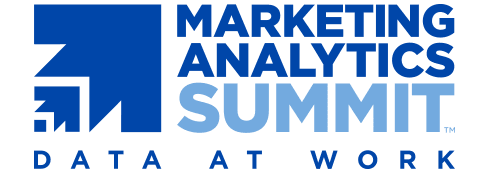Marketing Data Literacy Dimensions

Leave it to Tim Wilson to casually, quietly, and in the most gentlemanly way possible, let me know that my world view is too simplistic to believe.
I had spelled out the Marketing Data Literacy Spectrum along a scale that denotes corporate culture as running the gamut from anti-data to bleeding edge. Tim posited that there are more dimensions to data literacy than are dreamt of in my philosophy.
He’s right.
I had only delineated a dimension indicating the amount of faith an organization has in data as a means of competitive advantage.
I had missed his Data Literacy Triad post, but not his reference to it (4:05) during the LIVE recording of the Digital Analytics Power Hour, at the inaugural Marketing Analytics Summit.
Tim outlined three types of literacy:
Metrics Literacy — knowing what different data means
Tool Literacy — being able to self-service data needs efficiently and to an appropriate extent
Conceptual Literacy — approaching and applying data with clarity and sophistication
Having overcome my embarrassment at being so simpleminded, I am hereby putting the old jujitsu move on Tim’s remonstrance by suggesting that his perspective is equally insufficient in terms of multidimensionality and provide the following list (neither mutually exclusive nor intrinsically exhaustive) of data literacy dimensions.Data Faith
- Data Source
- Data Dictionary
- Data Management
- Metrics
- Tools
- Statistics
- Analytics Operations
- Domain Expertise
- Organization
- Interpersonal
- Curiosity
Data Faith Spectrum
(Previously proffered as Marketing Data Literacy Spectrum)
On the one extreme, your organization is dead set against data due to ignorance, misunderstanding, or theology. The other extreme is embracing all the data all the time, perhaps to the exclusion of gut feel which has served mankind for millennia.
Data Source Awareness
If we are to trust machines to calculate probabilities based on the data we feed it, we must have a firm grasp of where that data comes from.
- I know how the data is collected.
- I know how “the same” data is collected by different systems in different domains.
- I know how the data is misaligned when compared to other data.
- I know how the data gets preprocessed on its way to becoming a metric (below).
- I know how and when the data changed when we upgraded platforms.
- I know how data collection systems can fail, leaving gaps in reporting.
Data Dictionary Familiarity
Common definitions of ROI, profits, margins, or any other term of art seem unnecessary until misunderstandings undermine decision making. The difference between website hits, pageviews, and visits may seem trivial but is important when having impactful budget conversations and becomes crucial when evaluating machine-learned recommendations and outcomes.
Data Management Comprehension
Once collected, data goes on a convoluted journey that has a material impact on its wellbeing. Getting data from point A to point B may require multiple rounds of Extract Transform and Load, altering it at each step. An analyst reviewing a report must have an inate sense of how distorted any given measurement might be, based on its circuitous voyage.
Metrics Mastery
With a hat-tip to Mr. Wilson‘s post, I see metrics as one step removed from the data. Data can be measured (number of text messages) while metrics are calculated (number of text messages per day). Understanding how they are calculated differs. Time-On-Site might be as simple as Time-of-First-Page-View minus Time-of-Last-Page-View in Seconds. This is where the arguments start about whether we are capturing Time-Of-Departure, whether we’re accounting for multiple open tabs, and whether a Session times out at 30 minutes, 45 minutes or more. This becomes ever more convoluted when multiple metrics are used to derive a Key Performance Indicator.
Tool Competency
Tim got this one just right, so I’ll just quote him:
Unlike metrics literacy, tool literacy is not, definitionally, something that varies based on the type of data. Every company has that person that everyone knows is “really good with Excel.” That person is highly literate with Excel (or, at least, is sufficiently more literate than others in the organization to be perceived as such).
Tool literacy is a measure of how efficiently, intuitively, and effectively an employee uses the tools that are needed to access, explore, and present the data.
Statistics Proficiency
Knowing the data and the tools will not serve without a grasp of basic statistics. Advanced degrees are not required but an analyst must have a clear understanding of statistical significance, correlation, regression and the like. Keeping a college textbook on the shelf or keeping a browser tab open to some basic statistics will help immensely.
Analytics Operations Aptitude
In Tim’s terms this is, “Having a reasonable degree of comfort with different approaches for using data to validate hypotheses and where each is most appropriate: historical data analysis, qualitative research, quantitative research, split testing, etc.” Statistical Proficiency is to Analytics Operations as understanding a cookbook is to cooking a four-course meal. Book learning vs the practical application of that knowledge.
Domain Expertise
People, process, technology, and data are in service to a specific field. We focus on marketing but that’s only half the story. One needs to knowledgeable about marketing in a given realm be it selling shoes, garnering votes, soliciting donations or educating the masses. The valuable analyst has business acumen gathered over years of experience.
Organizational Intelligence
Every establishment has its purpose. Every purpose has its Key Performance Indicators. Data analysis is wasted unless the analyst has a full understanding of each indicator.
- I know how each KPI is derived.
- I understand the KPI hierarchy.
- I know who is responsible for the performance of each KPI.
- I understand the rewards and penalties for hitting or missing each KPI.
- I understand the personal and political interrelationships between budget controllers.
Interpersonal Skills
The best data, collected and managed the best way, used properly for the creation of metrics and displayed in the most vivid visual possible will not persuade a business decision maker without an understanding of what makes that individual tick.
All the technical, statistical and organizational skills will be for naught if the analyst cannot speak to the personal goals of the decision maker in terms the recipient can understand and in keeping with their personal objectives. Yes, on top of all the rest, the analyst must know if the recipient of their insights is more interested in earning a bonus, making a point, or showing off (to name a few).
Curiosity
Without the desire to learn and to ask, “Why?” there is no future for an analyst. Curiosity is more important than math skills. A mathematical genius with no curiosity is the same as a spelling bee master with no story to tell. This is a trait you hire for just as you hire for interpersonal skills. It’s very hard to teach somebody to be empathetic, responsible, or creative. You can encourage and foster curiosity and should do so at every opportunity.
Your Current Standing
How do you stack up on the above ten dimensions? Score yourself to get a quick look at where you might need to focus your attention.
It’s Complicated – That’s Why it’s Appealing
Spelled out this way, it’s easy to see why those who are drawn to analytics are drawn to detective novels, science fiction stories, puzzles, and to other people who share their love of hyper-complex problem solving. This is an industry that attracts people who require a significant amount of intellectual stimulation.
Sherlock Holmes has cocaine to fall back on. We have more data than can be dreamt of.
#notboring
What Did I Miss?
Can you think of other dimensions to add to the list? Enquiring minds want to know.



